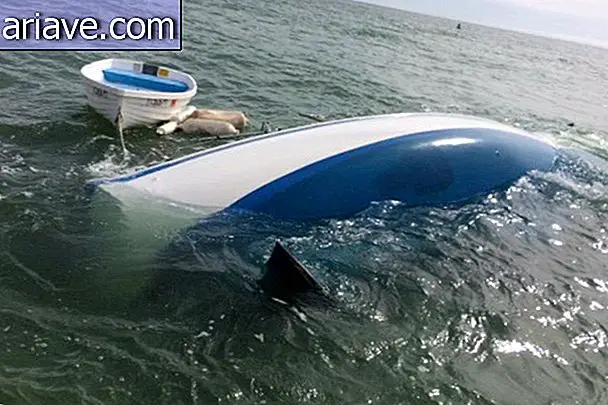5 exoplanets that future generations could colonize someday
1 - Kepler 438b
Located about 470 light years from Earth, the Kepler 438b has a mass between 0.6 and 4 times that of Earth and is 12% larger than our planet. In addition, the exoplanet orbits a red dwarf over 4 billion years old, completing one revolution every 35.2 earth days, and is situated in the habitable zone, meaning that water may exist in liquid form. on its surface.

The only problem with the Kepler 438b is that astronomers have estimated its average temperature to be 3 ° C - to give you an idea, here on Earth it's about 15 ° C - which means that future colonizers would probably pass quite cold there and would have to find alternative ways to grow food.
2 - Gliese 667 Ce
With a mass equivalent to 2.7 times that of Earth, Gliese 667 Ce is an exoplanet candidate located just over 22 light years from Earth, in a triple star system in the region of the constellation Scorpio. It orbits a red dwarf named GJ 667C which is between 2 and 10 billion years old and is in the habitable zone of its star, so there is a possibility that there is liquid water there.

In addition, Gliese 667 Ce has a mass about 3 times that of our planet, and each year of it equals 62 earth days. However, astronomers believe that it has synchronized rotation, which means that its orbital period is the same as that of rotation and therefore always the same face faces its star - and this could limit colonization, since only one side of the planet would receive the warmth of its sun.
3 - Kapteyn B
Kapteyn B is an exoplanet candidate orbiting a star of the same name that is 13 light-years from Earth in the constellation Pictor. In fact, the star - a red dwarf - was discovered by Dutch astronomer Jacobus Kapteyn in the late 19th century and is about one third of the mass of our Sun and about twice its age.

Astronomers estimate that the exoplanet has a mass about 5 times that of Earth and that it completes an orbit around its star every 48.6 earth days. In addition, Kapteyn B is in the habitable zone and is one of the potential exoplanet candidates with the potential to support life forms closer to our planet.
4 - Wolf 1061c
Situated 13.8 light-years from Earth in the Ophiuchus constellation, the Wolf 1061c is a super earth with 4.3 times the mass of our planet and which “resides” in a triple star system. The exoplanet orbits around a red dwarf star and is in its habitable zone, ie there is a possibility that water in liquid form may flow over its surface.

Scientists believe the gravity on the Wolf 1061c to be 1.6 times higher than ours, and it is estimated to have an orbital period equivalent to 17.9 Earth days, meaning that the years pass much faster than they do. here on earth. Also, as in the case of Gliese 667 Ce, it is likely to have synchronized rotation and therefore have one of its faces constantly facing its Sun.
5 - Gliese 667 Cc
Does the name of the exoplanet above look familiar? He is the “brother” of Gliese 667 Ce, which we talked about in item 2 of this list and therefore also orbits around the star GJ 667C. The Gliese 667 Cc is just over 4 times the mass of the Earth and, like its little brother, is in the habitable zone, which increases the chances that there is liquid water on its surface.

The Gliese 667 Cc was discovered in 2012, and it completes a loop around its star every 28 days. In addition, gravity is estimated to be slightly higher than Earth's, and if it has an atmosphere similar to ours, its average temperature is around 13 ° C. What is most interesting about this exoplanet is that scientists consider it a world that could potentially be colonized by humans in the future.
* Posted on 26/02/2016











